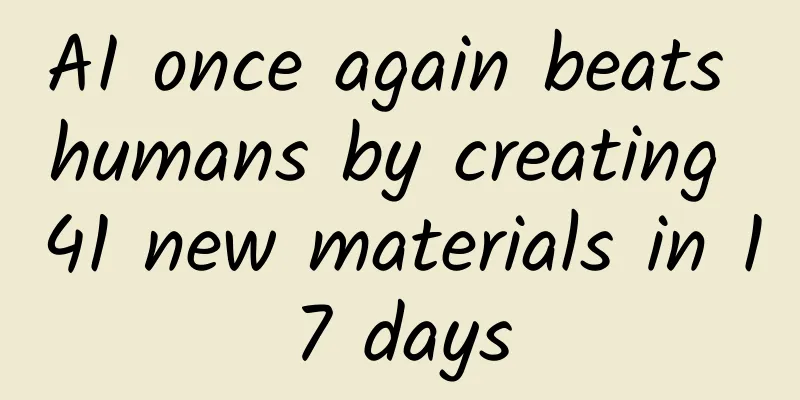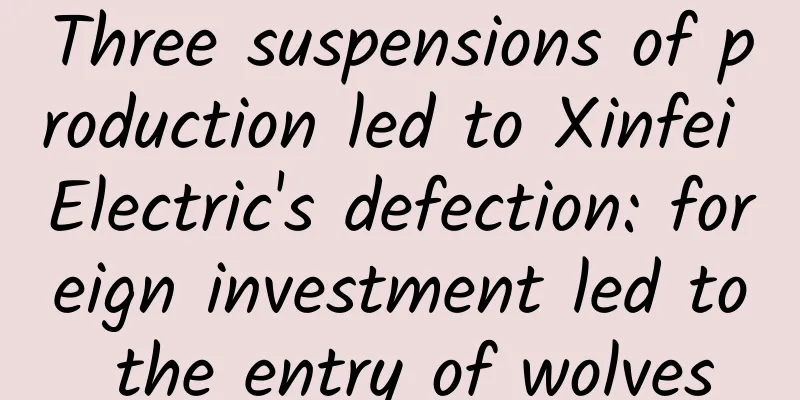AI once again beats humans by creating 41 new materials in 17 days

|
In just 17 days, artificial intelligence (AI) alone created 41 new materials, more than two per day. In contrast, it might take human scientists months of trial and experimentation to create a new material. Today, this AI laboratory named A-Lab was featured in the authoritative scientific journal Nature. According to reports, A-Lab is a laboratory where AI-guided robots manufacture new materials. It can quickly discover new materials with minimal human intervention. It can help identify and quickly track materials in multiple research fields, including batteries, energy storage, solar cells, fuel cells, etc. It is worth mentioning that in a test mission, A-Lab successfully synthesized 41 out of 58 predicted materials, with a success rate of 71%. The test data comes from Berkeley Lab's open access database Materials Project and the Graph Networks for Materials Exploration (GNoME) deep learning tool developed by Google DeepMind. Also today, Google DeepMind's GNoME was published in Nature, contributing nearly 400,000 new compounds to the Materials Project , the largest amount of new structural stability data added by a single team since the project was founded, greatly increasing the open access resources used by scientists to invent new materials for future technologies. “ To solve global environmental and climate challenges, we must create new materials,” said Kristin Persson, founder and director of the Berkeley Lab Materials Project and professor at the University of California, Berkeley. “With materials innovation, we can develop recyclable plastics, harness waste energy, make better batteries, and build cheaper, longer-lasting solar panels, among other things .” With AI, making and testing new materials is faster The development of new technologies often requires new materials. However, making a material is not easy. Scientists have computationally predicted hundreds of thousands of new materials, but testing whether these materials can be made in reality is a slow process. It takes a long time for a material to go from computation to commercialization. It must have the right properties, work in a device, be scalable, and have the right cost efficiency and performance. Today, with the help of supercomputers and simulation technology, researchers no longer have to rely on blind trial and error to create materials from scratch. In this work, the Google DeepMind team trained GNoME using the workflows and data developed by the Materials Project over more than a decade, and improved the GNoME algorithm through active learning. Ultimately, GNoME generated 2.2 million crystal structures, 380,000 of which were included in the Materials Project and predicted to be stable . This data includes the arrangement of the material's atoms (crystal structure) and its stability (formation energy). Figure | The compound Ba₆Nb₇O₂₁ is one of the new materials calculated by GNoME, containing barium (blue), niobium (white) and oxygen (green). According to the paper, GNoME has improved the accuracy of structural stability predictions to more than 80%, and the accuracy of composition predictions to 33% per 100 trials (compared to only 1% in previous work) . “We hope that the GNoME project will advance the study of inorganic crystals,” said Ekin Dogus Cubuk, head of the Google DeepMind materials discovery team. “External researchers have verified more than 736 new materials discovered by GNoME through independent physical experiments, proving that the discoveries of our model can be realized in the laboratory.” However, the research team also pointed out in the paper that in practical applications, GNoME still has some open problems, including phase transitions triggered by competing polymorphs, dynamic stability caused by vibrational profiles and configurational entropy, and a deeper understanding of the ultimate synthetic capability. To make the new compounds predicted by the Materials Project, A-Lab’s AI created new formulas by studying scientific papers and adapting them using active learning. “We have achieved an amazing 71 percent success rate, and we’ve already found ways to improve it,” said Gerd Ceder, a Berkeley Lab and UC Berkeley scientist and A-Lab principal investigator. “We have shown that combining theory and data with automation can produce incredible results. We can make and test materials faster than ever before.” It is reported that if some minor changes are made to the decision-making algorithm, the success rate can be increased to 74%. If computing technology is improved, the success rate can be further increased to 78%. "We want to not only make the data we generate free and available to accelerate materials design worldwide, but also teach the world what computers can do for people," Persson said. "They can scan large swaths of new compounds and properties more efficiently and faster than individual experiments." With the help of A-Lab, GNoME and others, scientists can focus on promising materials for future technologies, such as lighter alloys to improve automobile fuel economy, more efficient solar cells to increase the efficiency of renewable energy, or faster transistors for the next generation of computers. Has shown potential for application The Materials Project is currently processing more of Google DeepMind's compounds and adding them to its online database. This new data will be made available to researchers for free and will also be fed into projects such as A-Lab that collaborate with the Materials Project. Figure | Structures of 12 compounds from the Materials Project database. Over the past decade, researchers have experimentally confirmed the usefulness of new materials in a variety of fields based on clues from Materials Project data . Some of these have shown potential for applications such as: In carbon capture (extracting carbon dioxide from the atmosphere) As a photocatalyst (a material that speeds up chemical reactions in the presence of light and can be used to break down pollutants or produce hydrogen) As thermoelectric materials (materials that help harness waste heat and convert it into electricity) As a transparent conductor (can be used in solar cells, touch screens or LEDs) Of course, finding these potential materials is just one of many steps toward solving some of the great technological challenges facing humanity. In addition to the above two studies, AI has made many breakthroughs in the discovery and synthesis of new materials in recent years. In 2020, a multi-institutional research team including the National Institute of Standards and Technology (NIST) developed an AI algorithm called CAMEO, which autonomously discovered a potentially useful new material without requiring additional training from scientists. Figure | CAMEO's process of searching for new materials in a closed-loop operation (Source: NIST) In the same year, researchers from North Carolina State University and the University at Buffalo developed a technology called "Artificial Chemist" that combines AI and automated systems for performing chemical reactions to accelerate the development and production of new chemical materials needed for business. In 2022, nanoengineers at the University of California, San Diego School of Engineering developed an AI algorithm, M3GNet, that can almost instantly predict the structure and dynamic properties of any material, whether existing or new. Researchers can use it to find safer and more energy-dense rechargeable lithium-ion battery electrodes and electrolytes. Figure | Schematic diagram of multi-body graph potential energy and main calculation modules (Source: University of California, San Diego) In March this year, a study published in Nature Synthesis envisioned a future of accelerated materials science driven by the joint development of combinatorial synthesis and AI technology. In order to evaluate the applicability of synthesis technology to a specific experimental workflow, the researchers established a set of ten metrics covering synthesis speed, scalability, scope, and synthesis quality, and summarized some selective combinatorial synthesis technologies in the context of these metrics. As the foundation and forerunner of high-tech, new materials have extremely wide applications. Together with information technology and biotechnology, they have become the most important and most promising fields in the 21st century. In the future, with breakthrough developments in technologies such as AI, scientists will hopefully focus on materials that are more promising in future technologies, such as lighter alloys that improve automotive fuel economy, more efficient solar cells that promote the development of renewable energy, and faster transistors that will play a role in the next generation of computers. Reference Links: https://www.nature.com/articles/s41586-023-06735-9 https://www.nature.com/articles/s41586-023-06734-w |
<<: Not sure if there's water on Mars? Maybe we can dig a well there!
>>: Can trigger auroras! What is the origin of geomagnetic storms?
Recommend
What is SEO? Good book recommendation: "Growth Code: How to Operate Millions of Traffic on Large Websites"
What exactly is SEO? Most scholars believe that S...
All the copywriting skills were learned in junior high school!
The articles I write are more about copywriting c...
Scientific Imagination: How can humans achieve level one civilization, and what will it look like then?
There are many theories or conjectures about cosm...
Eating sugar before meals can help control appetite
In the past two or three years, everyone who purs...
Google says Fuchsia OS is not limited to mobile phones and will support more devices
According to foreign media reports, although Goog...
58 must-have planning tools for planners in 2020
I have divided these tools into the following typ...
How to crack the growth code of products?
How to understand growth? I believe that the core...
How to build the robolectric environment
[[153333]] I've been learning test-driven dev...
Is there any scientific basis for the idea that hiccups can be cured by being startled?
Reviewer of this article: Chen Haixu, Deputy Dire...
5G accelerates the construction of new infrastructure, and these industries may explode in 2020
After 5G was commercialized in 2019, 5G is undoub...
Interpreting ASP.NET 5 & MVC6 Series (4): Core Technology and Environment Configuration
asp.net 5 is the next generation of asp.net. This...
After being banned for 3 years, WeChat’s important “feature” may return!
Recently, according to feedback from some iOS use...
Why is your phone becoming less durable?
Would you use a mobile phone for seven years? Per...
What is the "belly button" of a navel orange? Are the fruits inside the belly button sweeter?
No way, no way, no one is going to start wearing ...
Aion LX OTA new upgrade, the second batch of high-precision maps is now available!
Recently, Aion LX has ushered in a new OTA upgrad...









